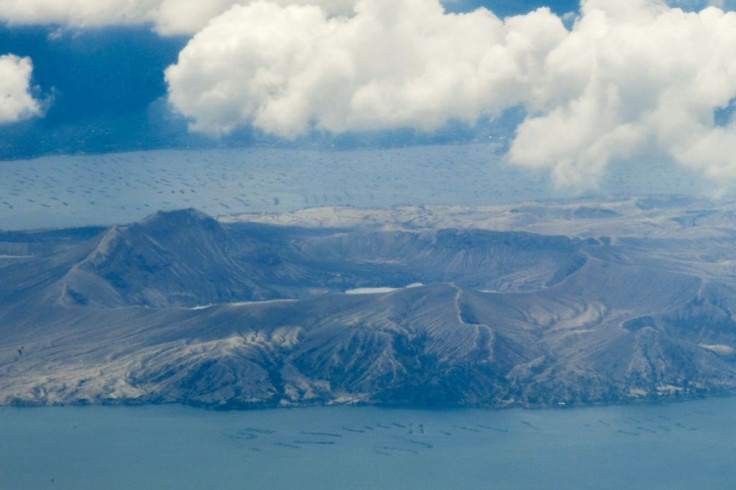What Is A Phreatomagmatic ‘Burst’? Taal Volcano Shoots Plume 200 Meters High
KEY POINTS
- The volcano did not exhibit major volcanic activity for over a year until July 1
- 60 volcanic quakes were reported in the past 24 hours
- More than 5,000 people have left their homes
The Philippines’ Taal volcano shot a grayish plume that reached 200 meters high Thursday in what is called a phreatomagmatic burst, forcing more than 5,000 villagers to flee their homes.
A phreatomagmatic burst is a volcanic activity that results from water and magma interaction at a volcano’s crater.
BULKANG TAAL
— PHIVOLCS-DOST (@phivolcs_dost) July 8, 2021
Buod ng 24 oras na pagmamanman
08 Hulyo 2021 alas-5 ng umaga
(Update)#TaalVolcanohttps://t.co/oPbKMyBiun pic.twitter.com/GwpLRBswkC
State volcanologists with the Philippine Institute of Volcanology and Seismology (PHIVOLCS) said the volcano also spewed high levels of volcanic sulfur dioxide that averaged 11,397 tons per day, CNN Philippines reported.
In the past 24 hours alone, the Taal volcano in Batangas triggered 60 volcanic quakes, PHIVOLCS said.
LOOK: Another phreatomagmatic burst occured at Taal's Main Crater as of 6:47 AM today, July 8.
— Panahon.TV (@PanahonTV) July 8, 2021
This generated a 200-meter grayish plume, as captured by Main Crater IPCamera. Alert level 3 still prevails over Taal Volcano. #TaalVolcano (Video courtesy of PHIVOLCS) pic.twitter.com/Lw6oDUUGYv
The Taal volcano, which is one of the smallest volcanoes in the world, did not exhibit major volcanic activity for over 12 months, until July 1 when it experienced its first phreatomagmatic eruption of the year.
The volcano recorded a series of phreatomagmatic bursts Wednesday, albeit smaller ones, reported the local newspaper Manila Bulletin.
The past 24 hours also witnessed 10 hybrid earthquakes, five explosion-type quakes, 21 volcanic tremor incidents that lasted between two to four minutes, and 24 low-frequency volcanic quakes.
PHIVOLCS warned that with the volcano remaining at Alert Level 3, “magma extruding from the main crater could drive explosive eruption,” adding that “all activities on Taal Lake should not be allowed at this time.”
Meanwhile, residents in nearby areas have been largely affected by the volcano eruption.
Students, in particular, have had their lives completely disrupted by evacuation activities. Polytechnic University of the Philippines (PUP) has suspended classes on campuses near the volcano. PUP has branches and campuses not only in Batangas but also in the nearby towns of Laguna and Cavite.
Evacuation continues for residents in high-risk villages. So far, more than 5,000 residents have left their homes and moved in with relatives or to designated evacuation centers.
Despite the volcano's weaker eruptions earlier today, Alert Level 3 remains over Taal and evacuation is recommended in the towns of Laurel and Agoncillo.
— CNN Philippines (@cnnphilippines) July 7, 2021
Our @TristanNodalo checks on the plight of evacuees in affected areas. https://t.co/sDo55hwVGt pic.twitter.com/2cg7JyKra9
The United Nations Children’s Fund (UNICEF) has expressed concerns for children affected by the Taal volcano’s activity, the Philippine Daily Inquirer reported.
UNICEF Philippines representative Oyunsaikhan Dendevnorov said the organization is “ready to support the government of the Philippines” in focusing on the well-being of affected children and their families.
Data from the Department of Social Welfare and Development (DSWD) revealed that at least 1,535 families have been displaced since evacuation drives began in Batangas.
Due to its location on the Pacific "Ring of Fire," which is a zone of intense seismic activity, the Philippines is often hit by eruptions and earthquakes.

© Copyright IBTimes 2024. All rights reserved.






















